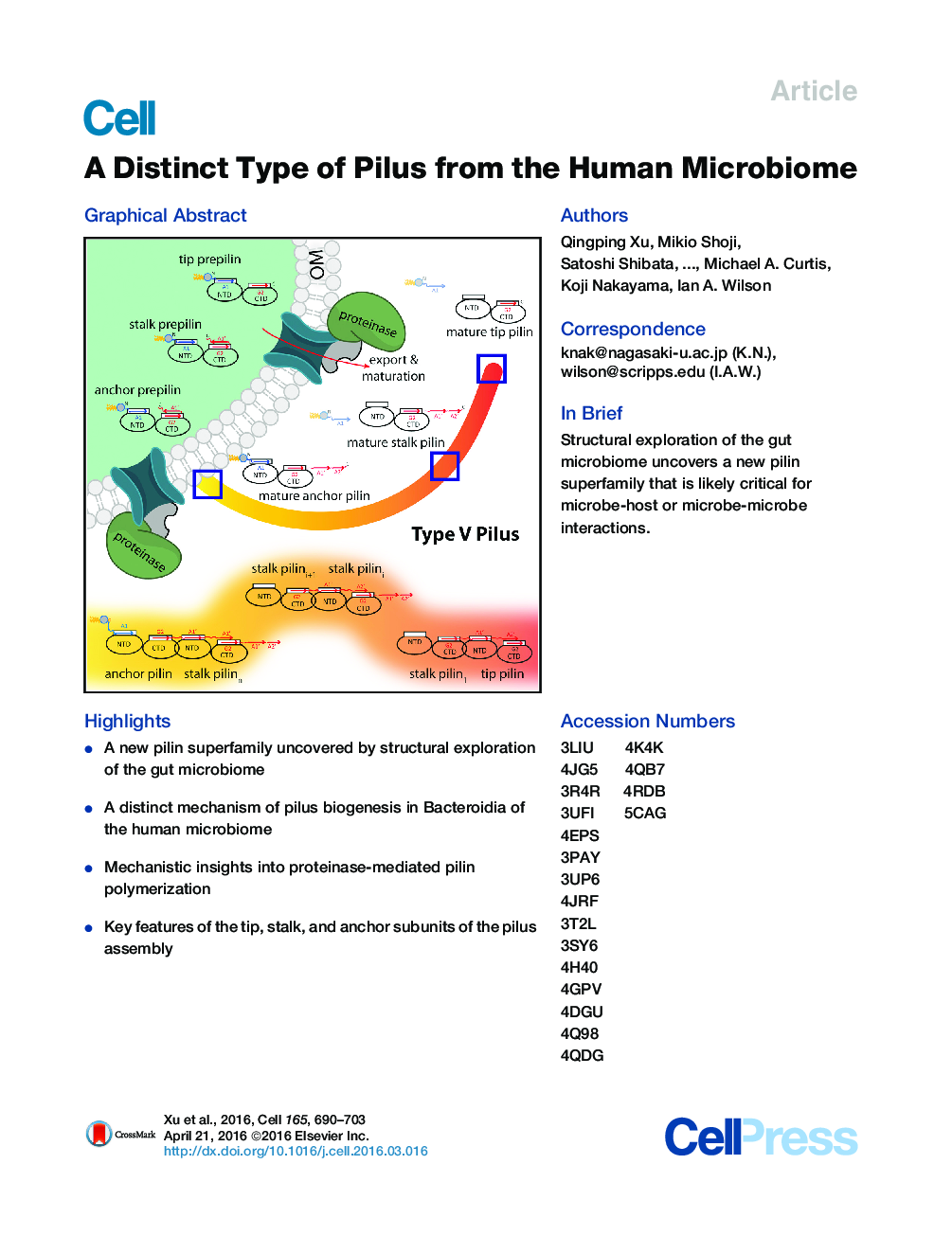| Article ID | Journal | Published Year | Pages | File Type |
|---|---|---|---|---|
| 2035071 | Cell | 2016 | 14 Pages |
•A new pilin superfamily uncovered by structural exploration of the gut microbiome•A distinct mechanism of pilus biogenesis in Bacteroidia of the human microbiome•Mechanistic insights into proteinase-mediated pilin polymerization•Key features of the tip, stalk, and anchor subunits of the pilus assembly
SummaryPili are proteinaceous polymers of linked pilins that protrude from the cell surface of many bacteria and often mediate adherence and virulence. We investigated a set of 20 Bacteroidia pilins from the human microbiome whose structures and mechanism of assembly were unknown. Crystal structures and biochemical data revealed a diverse protein superfamily with a common Greek-key β sandwich fold with two transthyretin-like repeats that polymerize into a pilus through a strand-exchange mechanism. The assembly mechanism of the central, structural pilins involves proteinase-assisted removal of their N-terminal β strand, creating an extended hydrophobic groove that binds the C-terminal donor strands of the incoming pilin. Accessory pilins at the tip and base have unique structural features specific to their location, allowing initiation or termination of the assembly. The Bacteroidia pilus, therefore, has a biogenesis mechanism that is distinct from other known pili and likely represents a different type of bacterial pilus.
Graphical AbstractFigure optionsDownload full-size imageDownload high-quality image (260 K)Download as PowerPoint slide
